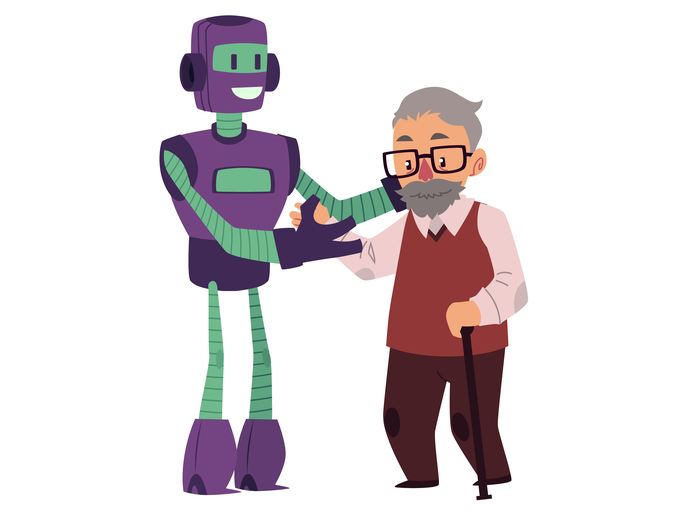How to use robots to tackle future global health crises like COVID-19
The past few years have seen robots being introduced into a range of public spaces, such as shopping malls, museums, hospitals and retirement homes. In addition to performing physical interactions like navigation, grasping and manipulating objects, such robots also execute social tasks like communicating with people. However, these robots usually lack the ability to deal with multiple people in different social settings. Enter the EU-funded SPRING project that aims to address this challenge by creating socially assistive robots that perform multi-person interactions and open-domain dialogue. A news item by project partner Heriot-Watt University states: “The project will focus on supporting elderly patients by carefully coupling scientific findings and user-focussed technological developments to bring social robots into gerontological healthcare.” Project partners argue that current technologies regarding human-robot interactions have certain limitations as hardware and supporting software are often designed for reactive, single-user applications. These result in one-on-one conversations where robots are required to wait for commands or questions based on a restricted set of scripted actions. The SPRING project is different from such platforms in that it focuses on developing robots that are able to move, see, hear and communicate in complex and unstructured populated spaces. Quoted in the same news item, Prof. Oliver Lemon from Heriot-Watt University says: “Research shows that the careful use of robots in group settings can have a positive impact on health, such as decreased stress and loneliness, and improved mood and sociability.” He adds: “Healthcare practitioners have been supportive of the use of robots during the non-medical phases of time in hospital because social robots can help explain complex concepts to patients with limited medical knowledge.”
Handling pandemics like COVID-19
According to the news item, thanks to the technology being developed by the project, the social robots will “understand various individuals and group situations and take appropriate decisions such as identifying patients that have been waiting alone for a long time or who might be anxious. The social robots will ultimately engage in face-to-face conversation with patients, their family members, staff members, and with whole groups of people.” Prof. Lemon highlights the “touch-free and hands-free” nature of the SPRING technology that “will be in great demand in the future as it will reduce the risk and spread of infection.” This is crucial because although the project was initially launched to assist the elderly, it could one day be beneficial for handling outbreaks like the COVID-19 pandemic. “It’s not something we had actually considered while designing the project. But as it turns out it’s quite relevant to what’s going on today,” Prof. Lemon tells the ‘BBC’. The SPRING (Socially Pertinent Robots in Gerontological Healthcare) project will run until December 2023. It will develop methods and algorithms for conversational AI, computer vision, audio processing, machine learning and human-robot interaction, alongside human behaviour analysis and sensorimotor robot control. Project partners will validate their technology in a day-care hospital for the elderly and assess its acceptability by patients and medical staff. For more information, please see: SPRING project
Keywords
SPRING, coronavirus, COVID-19, robot, human-robot interaction, social robot



